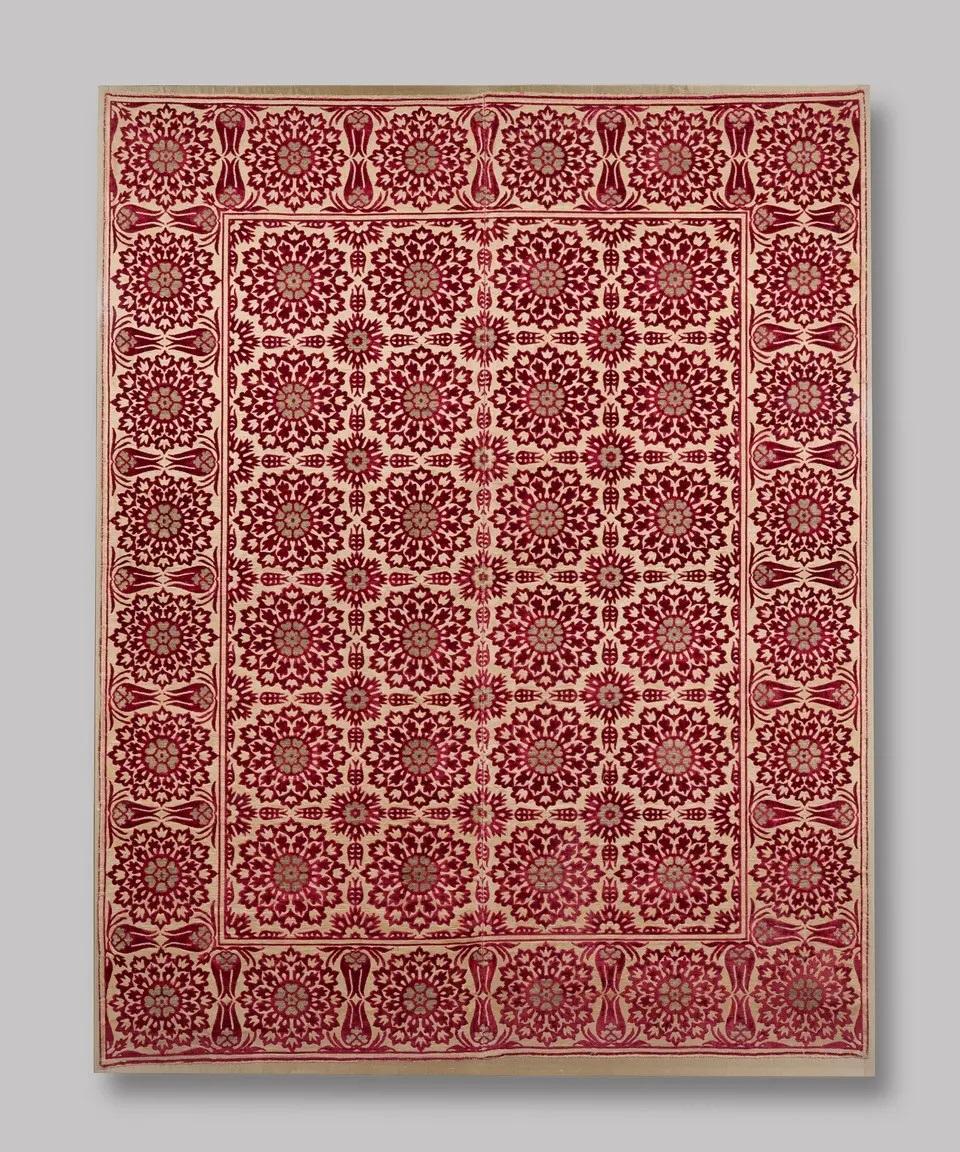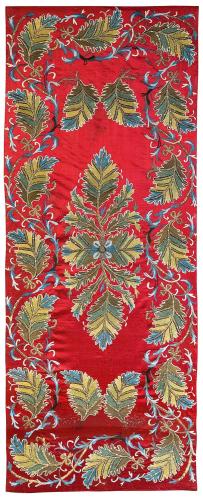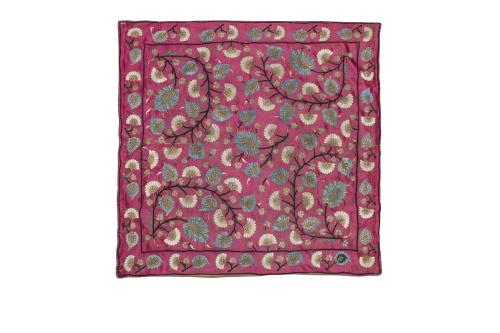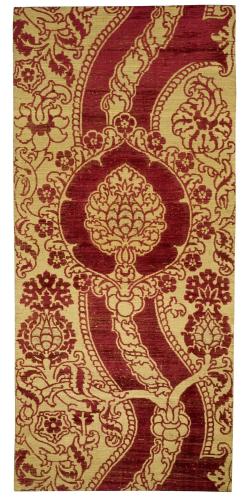

Price on application
This object is eligible for a Certificate of BADA Provenance
The BADA Standard
- Since 1918, BADA has been the leading association for the antiques and fine art trade
- Members are elected for their knowledge, integrity and quality of stock
- Our clients are protected by BADA’s code of conduct
- Our dealers’ membership is reviewed and renewed annually
- Bada.org is a non-profit site: clients deal directly with members and they pay no hidden fees
Extremely Fine Ottoman Voided Silk Velvet and Gold and Silver-Thread Panel.
Ottoman Empire.
First Half of the 17th Century.
Dimensions: 158 x 130 cm.
Cut crimson velvet on a silk warp-faced cream ground with six stacked vertical rows of eight-lobed blossoms emanating further foliate details, with gold and silver-thread highlights in central flowerheads; the border with en-suite motifs and confronting tulips. This design stands out for its geometric symmetry and the almost abstract quality of the spring flowers and tulips. The vertical and horizontal symmetry is based on the use of a repeated unit.
The large confronting tulips in the border are replaced with smaller confronting tulips in the centre of the composition. This creates an illusion and gives the centre a feeling of depth.
Tulip has a symbolic meaning in Ottoman art. The letters of the word tulip (Lâle) [لاله] in Turkish are the same letters used for writing the word Allah [الله] (God). These two words have the same numerological value in the abjad system (a decimal alphabetic numeral system in which the twenty-eight letters of the Arabic alphabet are assigned numerical values). Tulip is one of the leading decorative elements in Ottoman art, frequently used together with roses, hyacinths, sazleaves, for decorating ceramics, textiles, metalwork, woodwork and manuscript. Tulip is also used in imagery in Ottoman poetry. In many poems tulip leaves are likened to the cheeks of the beloved. The word lāleh-khad (lâle-had), means ‘tulip-cheeked’.
An identical velvet cover is in the Los Angeles County Museum of Art (inv. no. M.73.5.686). It is illustrated in Nurhan Atasoy et al, J. Raby, A. Effeny (eds.), Ipek, The Crescent and the Rose, Imperial Ottoman Silks and Velvets, Azimuth Editions, London, 2001, p. 318, fig. 349, where it is described as a design of “stacked eight-lobed medallions”, woven in Bursa during this period (ibid p. 319).
In terms of its design the present panel is also related to a second example in the Musée des Arts Decoratifs (inv. no. 8356), Paris, see, Nurhan Atasoy et al, J. Raby, A. Effeny (eds.), Ipek, The Crescent and the Rose, Imperial Ottoman Silks and Velvets, Azimuth Editions, London, 2001, pp. 318-9, fig. 352.
Imperial velvet panels such as the present one were highly favoured by the Ottoman elite. These were produced in workshops in Istanbul and Bursa, working for imperial commissions. They were used ceremonial covers as well as wall hangings during celebrations and festive gatherings.
This velvet panel is an excellent example of imperial Ottoman textile production in the first half of the 17thcentury. It is particularly rare to find a velvet panel of this kind in such remarkably good condition.
Provenance
Ex-Collection of William R. (1915-2007) and Elinor (1920-2020) Appleby, London and New York. The present Ottoman velvet came from the Applebys’ Upper East Side home.
Raised in New York, Elinor Appleby attended Julia Richmond High School and graduated from Barnard College. She married William Meyer and later William Appleby. Vivacious to the end, Elly loved bridge, travel, art, opera, golf. Elinor Appleby died on 9 January 2020 in New York. William Appleby lead a distinguished life and is remembered for his elegant style – never without a bowtie- and gentle nature. William R. Appleby died on 14 June 2007 in New York.
The Applebys’ enthusiasm for collecting art, which they mainly acquired through auctions whilst living in both London and New York, is testified through their continuous and generous support to the Metropolitan Museum of Art, notably the Asian Art department. Elinor and William Appleby’s taste was eclectic. It is interesting to compare a British late 16th-early 17th century Valance tapestry which they gifted to the Metropolitan Museum of Art (inv. no. 1991.316) that belongs to the same period as the present Ottoman velvet panel. Please see, https://www.metmuseum.org/art/collection/search/229990
The BADA Standard
- Since 1918, BADA has been the leading association for the antiques and fine art trade
- Members are elected for their knowledge, integrity and quality of stock
- Our clients are protected by BADA’s code of conduct
- Our dealers’ membership is reviewed and renewed annually
- Bada.org is a non-profit site: clients deal directly with members and they pay no hidden fees




